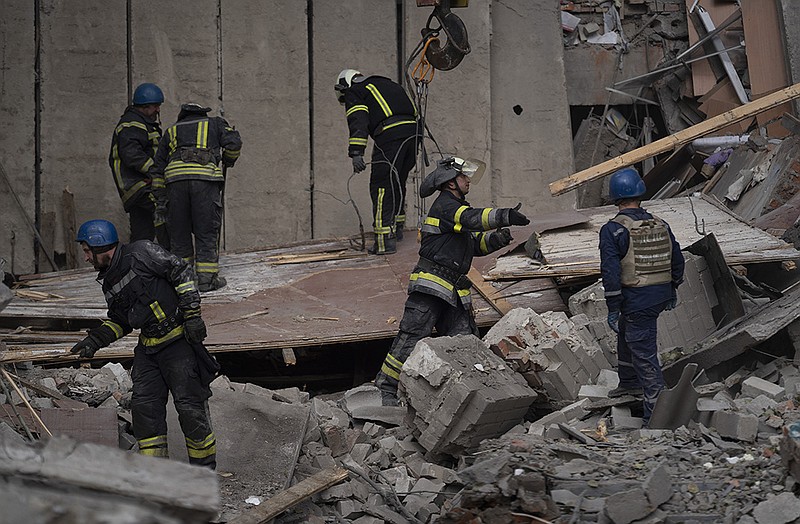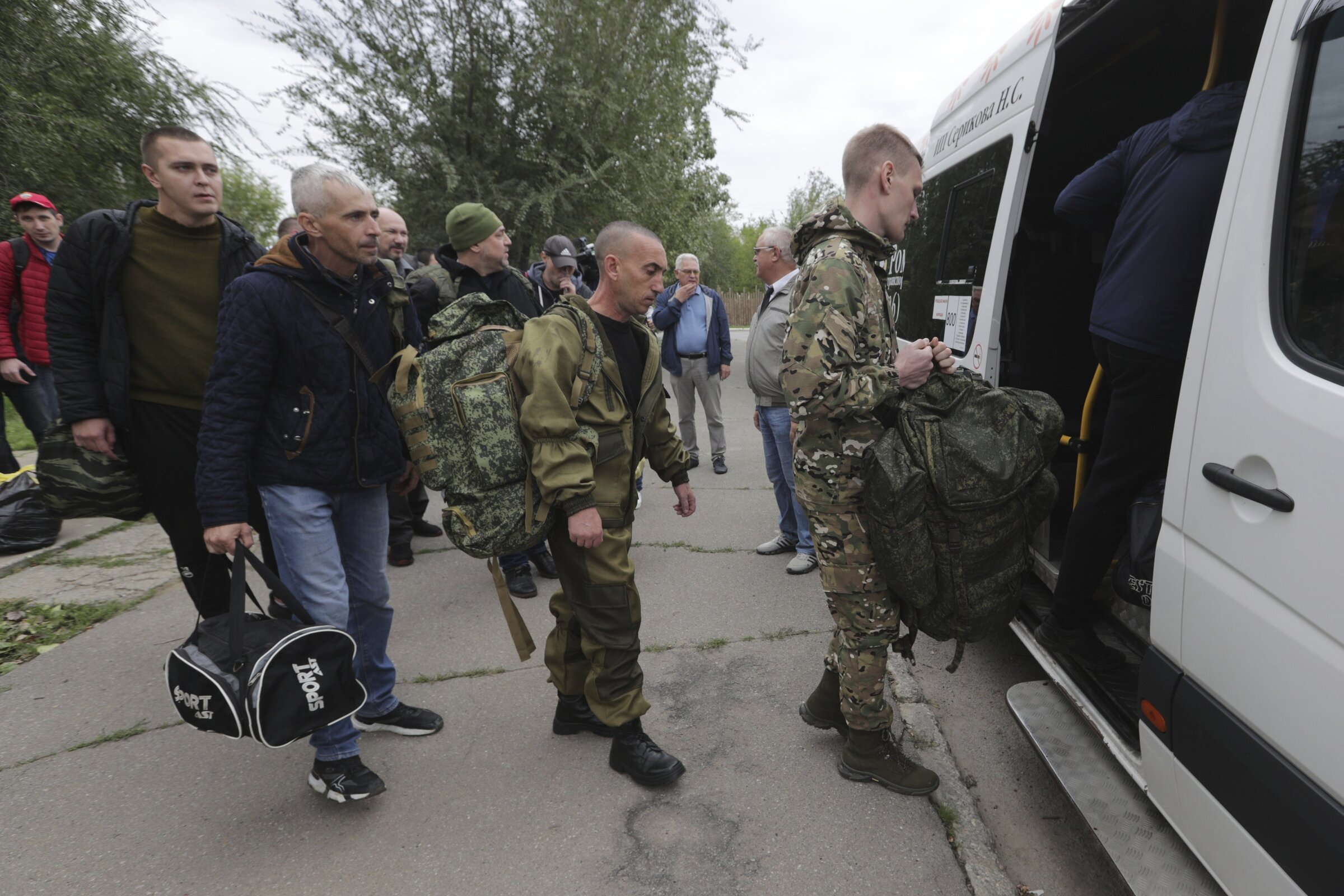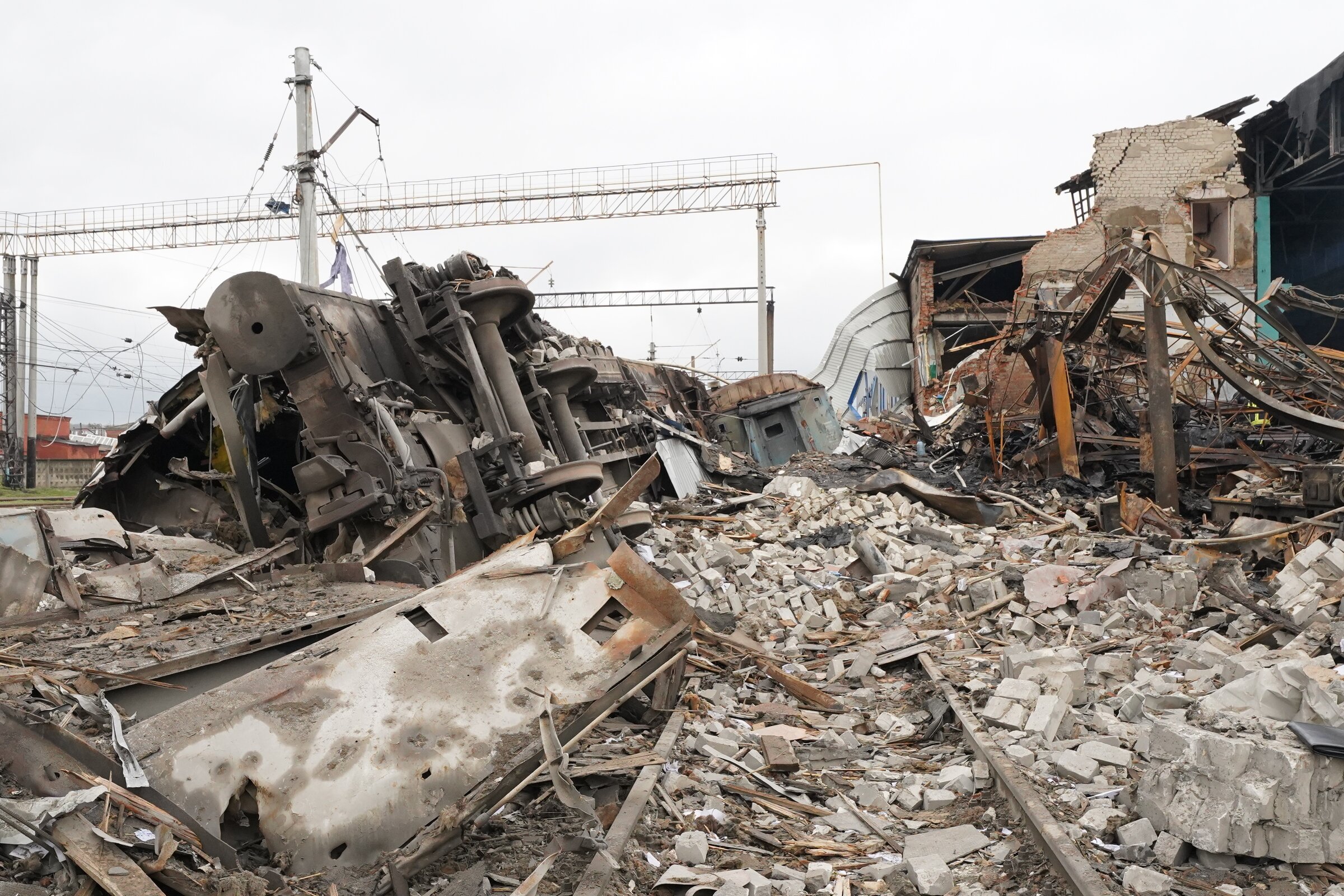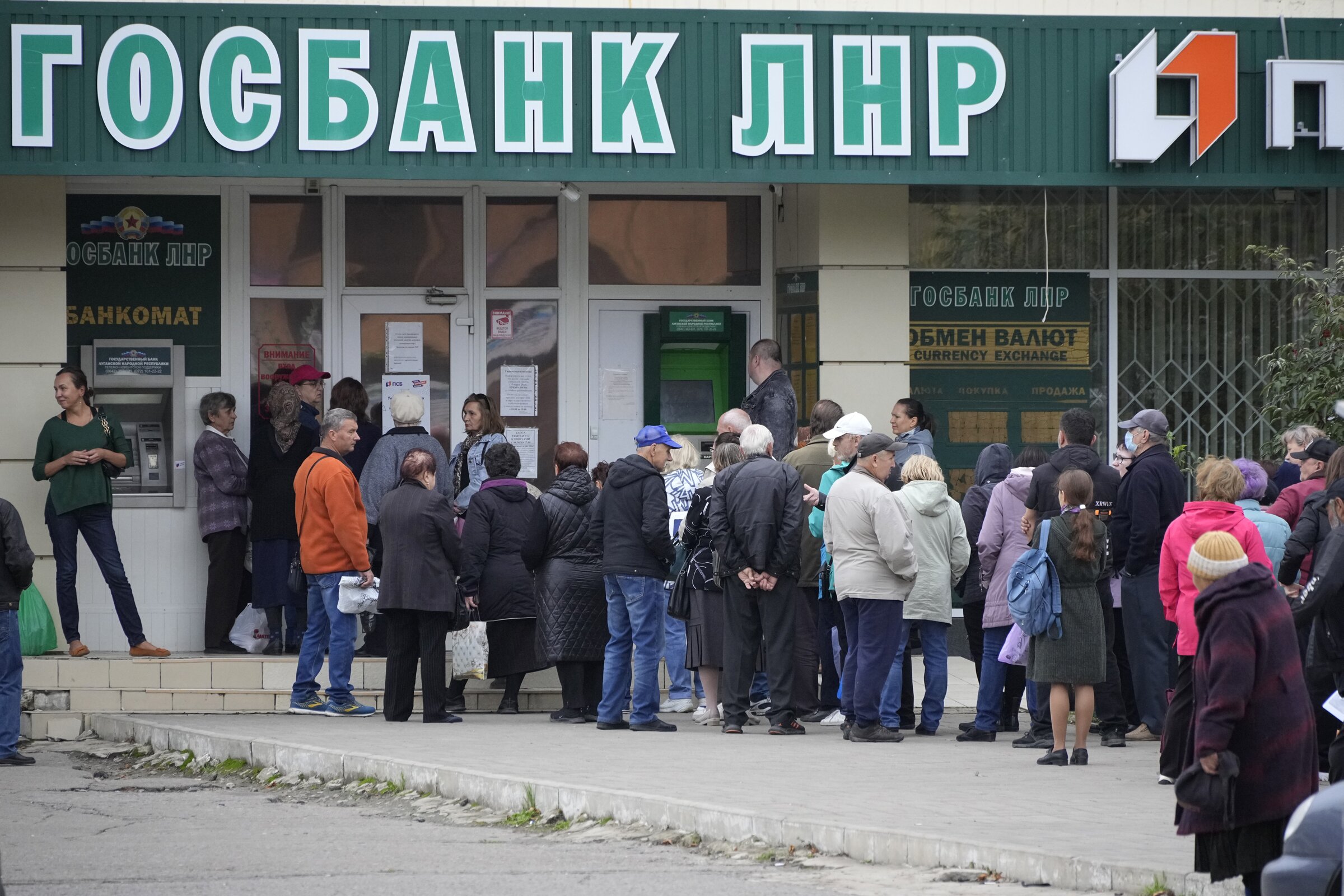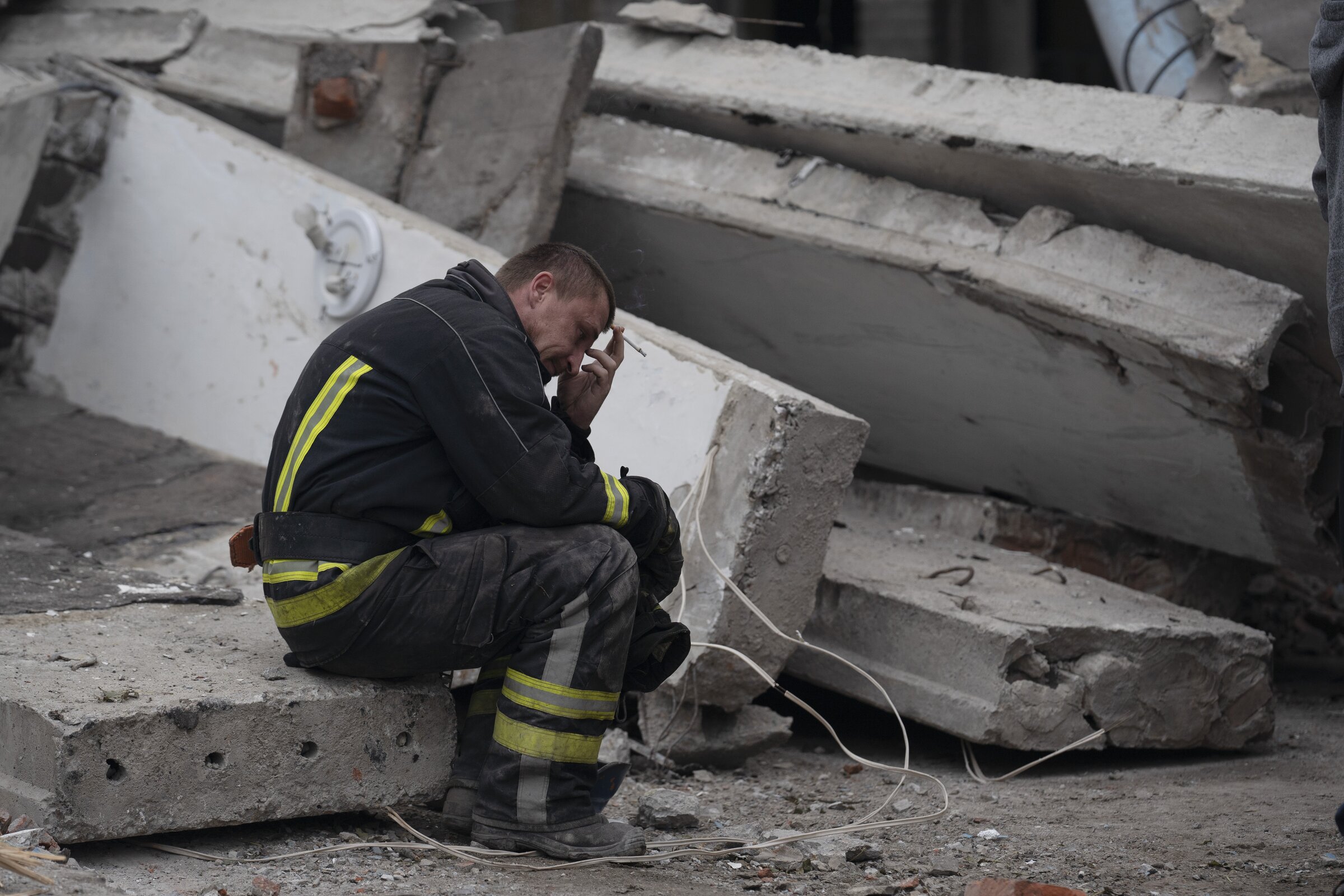WASHINGTON -- The U.S. will provide an additional $1.1 billion in aid to Ukraine, with funding for about 18 more advanced rocket systems and other weapons to counter drones that Russia has been using against Ukrainian troops, the Biden administration announced Wednesday.
The latest package is being provided under the Ukraine Security Assistance Initiative, which funds contracts to purchase weapons and equipment. And it brings the total of U.S. aid to Ukraine to nearly $17 billion since the Biden administration took office.
The aid announcement comes as Russia moves to annex parts of Russian-occupied Ukraine that held Kremlin-orchestrated referendums on living under Moscow's rule. The votes were denounced by Kyiv and the West as illegal and rigged.
"We will not be deterred from supporting Ukraine, we will continue to stand with the Ukrainian people, and provide them with the security assistance they need to defend themselves, for as long as it takes," White House press secretary Karine Jean-Pierre said.
Since the funding is for contracts for weapons and equipment, it is aimed at helping Ukraine secure its longer-term defense needs. It could take a year or two for Ukraine to get the systems. The U.S. has used Pentagon drawdown authority to provide weapons more immediately, and another announcement for that Defense Department aid is expected early next week.
The package includes funding for 18 of the High-Mobility Artillery Rocket System, or HIMARS, and ammunition for them, and 12 Titan systems, which are used to counter drones. Officials have said the HIMARS and other similar systems were key to Ukraine's battle successes in recent weeks. And the Russians have been using Iranian-made drones to target Ukrainian forces, underscoring the need for more systems to counter that threat.
Also in the package is funding for about 300 vehicles, dozens of trucks and trailers to transport heavy equipment, a variety of radars, communications and surveillance equipment, and other gear for soldiers. It also will include funding for equipment to detect explosives and for maintenance and training.
The war, now in its seventh month, has shifted to a new phase, as Russia tries to rebound from recent combat losses and use the referendums to politically solidify the gains it had made in the four occupied regions in the south and east.
MAKING IT OFFICIAL
Russian proxy officials in occupied areas of Ukraine appealed Wednesday to Russian President Vladimir Putin to join Russia, kicking off what is expected to be several days of pageantry and formalities intended to give Russia's annexation plans a sheen of legitimacy.
The moves are meant to check boxes under Russian law and the Russian constitution in a process for claiming land in a neighboring country that most of the rest of the world sees as patently illegal.
Staged referendums in occupied areas of Ukraine were hastily set in motion last week after Russia suffered setbacks on the battlefield. After five days of stage-managed voting, in which many residents said they were coerced to cast ballots by armed soldiers, the Russian proxy officials in occupied areas announced purported results that showed, as expected, overwhelming support for joining Russia.
Moscow-installed administrations in the four regions of southern and eastern Ukraine claimed Tuesday night that 93% of the ballots cast in the Zaporizhzhia region supported annexation, as did 87% in the Kherson region, 98% in the Luhansk region and 99% in Donetsk.
With the ostensible results in hand, the proxies asked the Russian government to incorporate their territories into Russia in informal appeals issued Wednesday morning.
The aim is to declare parts of Ukraine as Russian territory and then assert that the Ukrainian army is attacking Russia, not the other way around. Annexation would also provide a pretext for drafting Ukrainian men in occupied areas and forcing them to fight other Ukrainians.
The Russian army controls only portions of four provinces and has been losing ground. But if Russia follows the template laid down to annex the Crimean Peninsula from Ukraine in 2014, the Kremlin will present local leaders installed by the military as independent actors. In that instance, a carefully choreographed, multistep process ensued.
Putin could at any stage pause the process, possibly to open prospects for negotiation with the threat of annexation clearly on the table. If he does not, a next step would be submitting the appeals from the Russian proxy leaders for approval by both chambers of the Russian parliament. There would be few surprises here: Both houses consist entirely of members loyal to Putin.
In two of the four provinces that in recent days held shows of voting in referendums to join Russia, Donetsk and Luhansk, Moscow established client states eight years ago. Setting in motion the process of annexation, the leaders of these entities set out Wednesday for Moscow, saying they would speak directly with Putin.
In two others, Zaporizhzhia and Kherson, puppet leaders Wednesday declared independence from Ukraine in what they said was a first step toward being absorbed into Russia, a necessary formality as, under Russia's 1993 constitution, Moscow cannot annex areas of a neighboring country without the country's consent.
Denis Pushilin, leader of the Donetsk People's Republic, said he was leaving for Moscow with a document signed by members of an electoral commission showing results for use in the annexation process, Tass, the Russian news agency, reported. The leader of the Luhansk People's Republic, Leonid Pasechnik, was also reported to be on his way to Moscow and posted a video online asking Putin to accept what he called election results.
In the Kherson region in southern Ukraine, the leader set up by the occupying Russian army in the spring, Volodymyr Saldo, also publicly appealed to Putin to consider accepting Kherson as part of Russia.
So far, Putin has been coy about his plans. His spokesman, Dmitry Peskov, said Putin traveled from the Black Sea resort of Sochi to Moscow on Wednesday but planned no public comment on the referendums.
Ukraine's Foreign Ministry called the balloting "a propaganda show" and "null and worthless."
"Forcing people in these territories to fill out some papers at the barrel of a gun is yet another Russian crime in the course of its aggression against Ukraine," it said.
Jean-Pierre said the U.S. has determined that Russia falsified the results of the referendums, which it said showed overwhelming support for annexation.
"These so-called referenda have been an exercise in coercion and disinformation, executed by puppet authorities following orders from Russia," she said.
Jean-Pierre signaled that the White House was preparing new sanctions against Russia in response to the referendums, saying the U.S. and its allies planned to impose a "severe economic cost on Russia when they move forward with annexation."
European Commission President Ursula von der Leyen urged the EU's 27 member countries to agree on a new package of sanctions on Russia because of the proposed annexations.
In an interview with The Associated Press, an adviser to Ukrainian President Volodymyr Zelenskyy said Ukraine was determined to reclaim all the territory that Russia has seized during the war. Mykhailo Podolyak said the annexation by Russia would change nothing on the battlefield.
"Our actions depend not so much on what the Russian Federation thinks or wants, but on the military capabilities that Ukraine has," he said.
State Department spokesman Ned Price told reporters in Washington that the U.S. would not object to Ukraine using U.S.-supplied weapons to attack those areas if they are annexed by Russia.
"We have been clear when it comes to certain longer-range systems with our Ukrainian partners that these systems are for use on sovereign Ukrainian territory. If and when this annexation occurs as we expect it will, these areas will remain sovereign Ukrainian territory," Price said.
Information for this article was contributed by Lolita C. Baldor, Matthew Lee, Jon Gambrell and Adam Schreck of The Associated Press and by Andrew E. Kramer of The New York Times.
Gallery: Images from Ukraine and Russia, month 8
